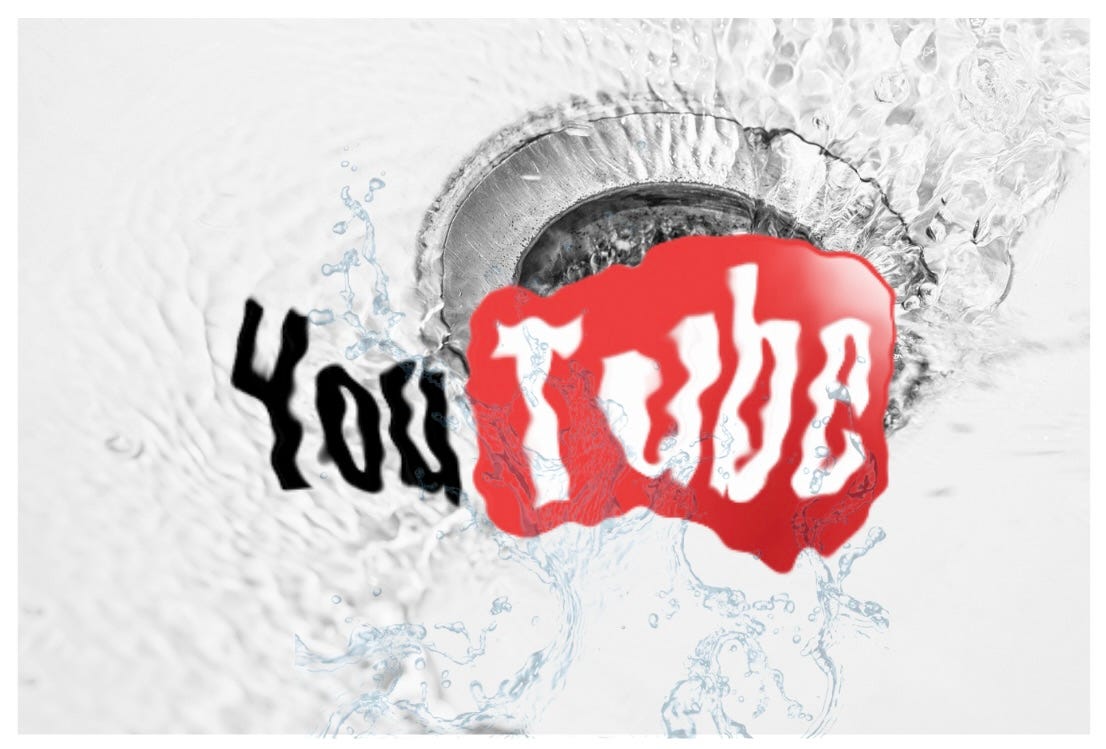Worst-Case Scenario: YouTube
Google's platform now accounts for 10 percent of living-room viewing. But any of these six things could stop it dead in its tracks
Another week, another great one for everyone’s favorite free streamer: YouTube. Check out this fresh eye-popping statistic that nearly 10 percent of TV viewing in living rooms — not even counting phones! — belonged to YouTube:
YouTube’s success — its announcements in April that viewers are watching more than 1 billion hours of YouTube a day on TVs, that ad revenue was up 21 percent in the first quarter to $8.1 billion, that subscriptions for YouTube Premium (and Music) topped 100 million — has motivated everyone all of a sudden to realize YouTube is not only a big deal but a threat to the rest of the entertainment ecosystem. (Your resident strategy guy, me!, covered this in February before the hype got deafening.)
Perhaps the peak of YouTube fervor — well, it certainly feels like the sort of frothy assessment that signals a top — came last week when one analyst estimated that if YouTube were a standalone company rather a division of Google (itself a division of Alphabet), it would be valued at more than $450 billion. What better assessment of the current enthusiasm for all things YouTube right now than placing it among the world’s 20 most valuable companies?1
This kind of elite consensus just begs for someone out there to make the bear case for YouTube — the “what could go wrong even though everything seems to be going right?” argument. As a strategic tool, I really like planning for the worst case, because it can help you avoid wishful thinking and identify true threats early. (For long-time Ankler subscribers, back in 2022, I published a series of “worst-case scenarios” for each media company: Apple TV+, Amazon, Disney, Comcast, Netflix and Warner Bros. Discovery. My worries for all of Hollywood were here — and every scenario got worse as the year progressed.)
So let’s turn our jaundiced eye towards YouTube today and consider its nightmare scenario. The threats to YouTube’s dominance break down into two large buckets — regulators and competitors — and for as swimmingly everything is going now, continued success is far from assured.
In this article, you’ll learn:
The two major government threats to YouTube’s business
The four major competitive threats to YouTube’s business
The dirty secret still powering at least part of YouTube’s success
What YouTube’s entertainment industry rivals should make their number one lobbying priority
How AI presents a far more existential risk to YouTube than Hollywood
The glaring hole in YouTube’s programming lineup
Why creators are so loyal to YouTube — but how they could be pried away by other streamers




